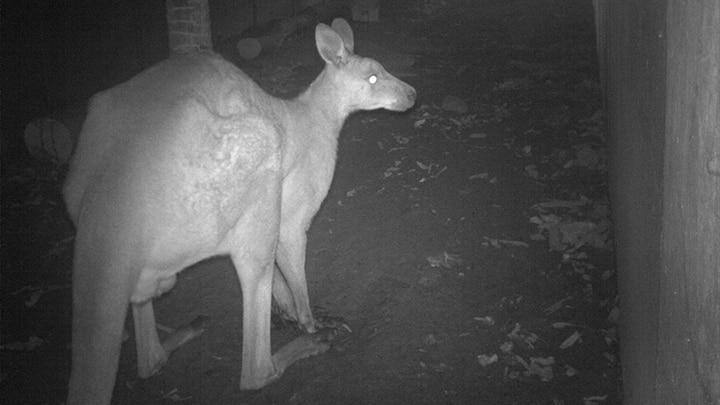Have you ever driven past special road crossings for wildlife and wondered if they actually work?
Key points:
- A new study by Southern Cross University provides evidence that road underpasses are used by wildlife to safely cross
- It’s the first long-term study of underpasses in Australia and focussed on two locations in northern NSW
- It found some mammals were using underpasses more than once a week
There’s new evidence to suggest they are effective, based on the first long-term study of road underpasses in Australia.
The research from Southern Cross University (SCU) was published in the journal Ecology and Evolution and based on a two-year study of underpasses located on the Mid North Coast of New South Wales.
During that time wildlife cameras detected close to 5,000 medium-to-large mammals and goannas using highway underpasses at Port Macquarie and Grafton.
The researchers studied 12 underpasses in those two areas– five under the Oxley Highway at Port Macquarie and seven under the Pacific Highway south of Grafton – comparing camera trap detections of animals at underpasses with those at nearby forest sites.
The lead researcher, SCU Associate Professor Ross Goldingay, said the results were encouraging.
“More than 4,800 detections were made; that number was quite astounding,” he said.
“These crossing rates suggest animals used the underpasses to forage on both side of the freeways.”
Associate Professor Goldingay said certain species, including eastern gray kangaroos, swamp wallabies, red-necked wallabies, red-necked pademelons, and lace monitors crossed some underpasses more than once per week.
“We actually got quite a bit of traffic of animals passing through those underpasses, particularly in Port Macquarie … it’s a wetter forest type there so it seems there’s a greater abundance of animals,” he said.
“We were getting eastern gray kangaroos and swamp wallabies moving through two to four times per week and other species, including the red-necked pademelon was going through once every two weeks, so quite frequently.
“At Grafton we’ve got a very high use of a couple of underpasses by echidnas and another small wallaby called the rufous bettong, which is actually a NSW-listed threatened species.”
‘Prey-trap’ concerns dismissed
The study also dispelled concerns that underpasses could become a “prey-trap” used by introduced feral pests and that animals could become caught in the relatively confined area.
“We looked at that in detail as there have been a couple of other short-term studies where they have had frequent occurrences of foxes in a few underpasses, and in one case in Western Australia that coincided in a decline in the bandicoots using that particular underpass,” Professor Goldingay.
“Because we had more underpasses and a longer period for this study, we were able to look at this in more detail than anyone has before.”
Professor Goldingay said predators which were detected at the underpasses included the introduced red fox, feral cat, and dingo.
“What we found was feral cats were very rare at both sites. We did have dingoes at both sites, but they weren’t very frequent in the underpasses,” he said.
“The red fox is the main concern, particularly in Port Macquarie. Of the five underpasses there, there were three that were used relatively frequently.
“However, the fox activity coincided less than expected with the activity of the mammals most at risk and it seemed potential prey were possibly avoiding using the underpasses when foxes were about.”
Caution still needed
Despite the positive study results, Professor Goldingay said any expansion of road networks in Australia still needed to be done with caution.
“Australia’s wildlife species are increasingly threatened with extinction by habitat clearing and fragmentation,” he said.
“One leading cause of this is the expansion of our road network, particularly the upgrade and duplication of major highways.
“Underpasses are a useful generic tool to enable wildlife to move across landscapes with roads. But not all ground-dwelling species of wildlife will find underpasses to their liking but so far, many do.”
.
